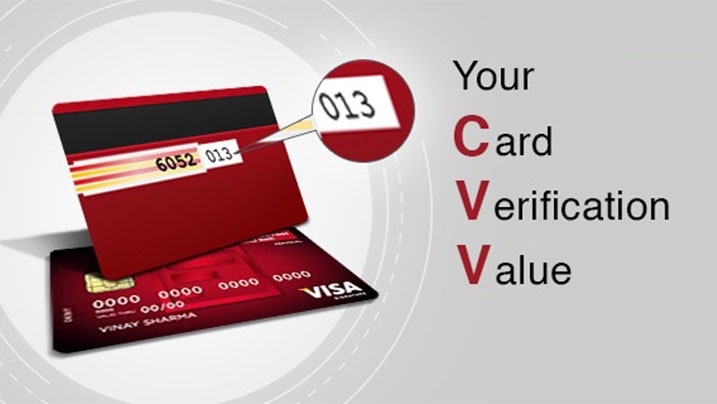CKYC Registry
-
Customer Service Contact us Service request Locate a branch
Find all the help you need
Scan the QR, get our app, and find help on your fingertips

Help CenterSupport topics, Contact us, FAQs and more
-
Login
Are you ready for an upgrade?
Login to the new experience with best features and services
-
Login
Are you ready for an upgrade?
Login to the new experience with best features and services
- Accounts
-
Deposits
IDFC FIRST Bank Deposits
View all Deposits -
Loans
IDFC FIRST Bank Loans
View all Loans - Wealth & Insure
-
Payments
IDFC FIRST Bank Payments
View all Payments -
Cards
IDFC FIRST Bank Cards
View all Cards - Blogs
- Corporate Account
-
Cash Management Services
IDFC FIRST Bank Cash Management Services
View all Cash Management Services - Supply Chain Finance
-
Corporate Lending
IDFC FIRST Bank Lending
View all -
Treasury
IDFC FIRST Bank Treasury
See more details - NBFC Financing
Support topics, Contact us, FAQs and more
- IDFC FIRST Bank Accounts
-
Savings Account
-
Corporate Salary
Account -
Senior Citizens
Savings Account -
First Power
Account -
Current Account
-
NRI Savings
Account -
TASC Institutional
Account -
Savings Account
Interest Calculator
- IDFC FIRST Bank Deposits
-
Fixed Deposit
-
Recurring Deposit
-
NRI Fixed Deposit
-
Safe Deposit Locker
-
FD Calculator
-
RD Calculator
- IDFC FIRST Bank Loans
-
Personal Loan
-
Consumer Durable
Loan -
Home Loan
-
Business Loan
-
Professional Loan
-
Education Loan
-
New Car Loan
-
Pre-owned Car Loan
-
Two Wheeler Loan
-
Pre-owned Two
Wheeler Loan -
Commercial Vehicle
Loan -
Gold Loan
-
Loan Against Property
-
Loan Against Securities
-
Easy Buy EMI card
-
Personal Loan
EMI Calculator -
Education Loan
EMI Calculator -
Home Loan
EMI Calculator
- IDFC FIRST Bank Wealth & Insure
-
FIRST Select
-
FIRST Wealth
-
FIRST Private
-
Mutual Funds
-
Sovereign Gold Bond
-
Demat Account
-
Term Insurance
-
Life Insurance
-
Health Insurance
-
General Insurance
-
Bonds
-
Loan Against
Securities -
Portfolio Management
Service
- IDFC FIRST Bank Payments
-
FASTag
-
Credit Card
Bill Payments -
UPI
-
Funds Transfer
-
Forex Services
-
Pay Loan EMI
- IDFC FIRST Bank Cards
-
Ashva :
Metal Credit Card -
Mayura :
Metal Credit Card -
FIRST Millennia
Credit Card -
FIRST Classic
Credit Card -
FIRST Select
Credit Card -
FIRST Wealth
Credit Card -
FIRST WOW!
Credit Card -
Deals
-
Debit Cards
-
Co-branded Cards
-
Credit Card
EMI Calculator -
FIRST Corporate
Credit Card -
FIRST Purchase
Credit Card -
FIRST Business
Credit Card
- Premium Metal Credit Cards
-
AshvaLifestyle1% Forex₹2,999
-
MayuraLifestyleZero Forex₹5,999
-
FIRST PrivateInvite Only
- Best for travellers
-
MayuraZero ForexMetal₹5,999
-
Ashva1% ForexMetal₹2,999
-
FIRST WOW!Zero ForexTravelLifetime Free
-
FIRST SWYPTravel OffersEMI₹499
-
FIRST Select1.99% ForexLifestyleLifetime Free
-
FIRST Wealth1.5% ForexLifestyleLifetime Free
-
Club VistaraTravelLifestyle₹4,999
-
IndiGo IDFC FIRST Dual Credit CardTravelLifestyle₹4,999
- Max benefits, Free for life
-
FIRST Classic10X RewardsShoppingNever Expiring Rewards
-
FIRST Millennia10X RewardsShoppingNever Expiring Rewards
-
FIRST Select10X RewardsLifestyle1.99% Forex
-
FIRST Wealth10X RewardsLifestyle1.5% Forex
-
FIRST WOW!RewardsTravelZero Forex
-
LIC ClassicRewardsInsuranceShopping
-
LIC SelectRewardsInsuranceShopping
- Reward Multipliers
-
AshvaLifestyleMetal₹2,999
-
MayuraLifestyleZero Forex₹5,999
-
FIRST ClassicNever Expiring RewardsShoppingLifetime Free
-
FIRST MillenniaNever Expiring RewardsShoppingLifetime Free
-
FIRST SelectNever Expiring RewardsLifestyleLifetime Free
-
FIRST WealthNever Expiring RewardsLifestyleLifetime Free
- Rewards & Credit on UPI
-
FIRST Power+FuelUPI₹499
-
FIRST PowerFuelUPI₹199
-
FIRST EA₹NVirtual1% Cashback₹499
-
FIRST DigitalVirtualUPI₹199
-
IndiGo IDFC FIRST Dual Credit CardUPITravelDual cards
- Fuel and Savings
-
FIRST PowerRewardsUPI₹199
-
FIRST Power+RewardsUPI₹499
-
LIC ClassicRewardsInsuranceShopping
-
LIC SelectRewardsInsuranceShopping
- Express and Flaunt
-
AshvaMetal1% Forex₹2,999
-
MayuraMetalZero Forex₹5,999
-
FIRST SWYPEMIOfferMAX₹499
-
FIRST MillenniaRewardsShoppingLifetime Free
- FD Backed rewarding Credit Cards for all
-
FIRST EA₹NVirtualCashback₹499
-
FIRST WOW!Zero ForexTravelLifetime Free
-
CreditPro Balance TransferTransfer & SaveReduce InterestPay Smartly
- IDFC FIRST Bank NRI Forex Solutions
-
Send money to India-Wire transfer
-
Send money to India-Digitally
-
Send money abroad
-
Max Returns FD (INR)
- IDFC FIRST Bank MSME Accounts
-
Platinum Current
Account -
Gold
Current Account -
Silver Plus
Current Account -
Merchant Multiplier
Account -
Agri Multiplier
Account -
TASC Institutional
Account -
Dynamic Current
Account -
World business
Account -
First Startup
Current Account
- IDFC FIRST Bank Business Loans
-
Business Loan
-
Professional Loan
-
Loan Against Property
-
Business Loan for Women
-
Working Capital Loan
-
Construction Equipment Loan
-
Machinery Loan
-
Healthcare Equipment Loan
- IDFC FIRST Bank Business Solutions
-
Payment Solutions
-
Tax Payments
-
Doorstep Banking
-
Point of Sale (POS)
-
Escrow Accounts
-
NACH
-
Payment Gateway
-
UPI
-
Virtual Accounts
-
As per amendment in the Income Tax Rules, PAN or Aadhaar are to be mandatorily quoted for cash deposit or withdrawal aggregating to Rupees twenty lakhs or more in a FY. Please update your PAN or Aadhaar. Kindly reach out to the Bank’s contact center on 1800 10 888 or visit the nearest IDFC FIRST Bank branch for further queries.
-
-
Most Searched
Sorry!
We couldn’t find ‘’ in our website
Here is what you can do :
- Try checking the spelling and search
- Search from below suggestions instead
- Widen your search & try a more generic keyword
Suggested
Get a Credit Card
Enjoy Zero Charges on All Commonly Used Savings Account Services
Open Account Now
Credit Card
What does a CVV code in a credit card signify?
Key Takeaways
CVV, or Card Verification Value, is a critical security feature on credit cards that helps prevent unauthorised transactions, especially in online shopping.
The CVV is a three- or four-digit number printed on your credit card, and it does not store any sensitive personal information or your card’s PIN.
The CVV is generated using complex algorithms based on your card’s primary details, ensuring the security of your card transactions.
Protecting your CVV is essential to safeguard your credit card from potential fraud, making it crucial to never share it unnecessarily or store it insecurely.
In today’s digital age, credit cards have become an indispensable tool for financial transactions, offering unparalleled convenience and benefits. However, with the rise in online shopping and electronic transactions, security has become one of the most important concern. One of the key features designed to safeguard your card against fraudulent activities is the CVV code. But what exactly does this code mean, and why is it so important? Let’s delve into the details.
READ MORE
What is a CVV?
A CVV, or Card Verification Value, is a three- or four-digit number found on your credit card. It serves as an additional layer of security, particularly for card-not-present transactions, such as online purchases. While your credit card number identifies your account, the CVV helps verify that the person making the transaction physically possesses the card. This security feature is designed to protect both the cardholder and the merchant from fraudulent activities.
Components of CVV
The CVV is composed of a three- or four-digit number depending on the card network. For most credit cards, such as those issued by Visa, MasterCard, and Discover, the CVV is a three-digit number located on the back of the card, typically near the signature strip. American Express cards, on the other hand, have a four-digit CVV located on the front of the card, above the card number.
The CVV is not embossed like the card number and expiry date, making it harder to replicate or steal through traditional means. This number is also unique to your card and is not stored in any databases after a transaction is processed, ensuring that it cannot be reused by fraudsters. Additionally, the CVV is generated based on several components, including your card number, expiration date, and a secret key known only to the card issuer.
How is the CVV generated?
The CVV is generated using a complex algorithm that combines the primary account number (PAN), the card’s expiration date, and a secret encryption key. This algorithm ensures that the CVV is unique to your card and cannot be easily guessed or replicated, thereby providing an additional layer of security for your transactions.
What does the CVV code reveal?
The CVV code does not reveal any sensitive personal information about the cardholder. It is a purely security-related feature, designed to confirm that the person making the transaction is in physical possession of the card. The code does not store or transmit your PIN, account number, or any other personal data, making it a crucial component of secure online transactions.
How to find the CVV in a credit card?
Finding the CVV on your credit card is quite simple. For Visa, MasterCard, and Discover cards, the CVV is the three-digit number located on the back of the card, usually near the signature strip. For American Express cards, the CVV is the four-digit number printed on the front, above the card number.
How does the CVV number work?
The CVV number works as an additional security measure during transactions, particularly for online purchases where the card is not physically swiped. When you enter your card details online, the merchant requests the CVV to verify that you have the card in your possession. This number is then checked against the card issuer’s records to validate the transaction. If the CVV does not match, the transaction is declined, preventing potentially fraudulent activities.
Importance of CVV number
The importance of the CVV number cannot be overstated. It adds a critical layer of security to your credit card transactions, especially in the growing world of e-commerce. By ensuring that the CVV is required for card-not-present transactions, card issuers can significantly reduce the risk of fraud. Without the correct CVV, unauthorized users cannot complete a transaction, even if they have access to your card number and expiry date.
How does CVV protect you from frauds?
The CVV plays a crucial role in protecting your credit card from fraudulent activities. Cybercrimes are quite common now a days and fraudsters may attempt to steal your card details through various means, such as phishing emails, data breaches, or card skimming. However, even if they manage to obtain your card number and expiration date, they cannot complete most online transactions without the CVV.
Since the CVV is not stored in merchants’ databases, it is much harder for cybercriminals to access this information. For example, in a data breach where card numbers and expiry dates are stolen, the absence of CVVs makes it challenging for fraudsters to use the stolen data for online purchases. Furthermore, the CVV adds an extra step in the authentication process, acting as a deterrent to those who might otherwise attempt to misuse your card.
Another layer of protection comes from the fact that the CVV is not embossed on the card like the card number and expiry date. This makes it less susceptible to physical copying methods, such as skimming. By requiring the CVV for online transactions, card issuers can also track and flag suspicious activities where the CVV is not used or is entered incorrectly, further safeguarding your account from unauthorised access.
With IDFC FIRST Bank credit cards, you enjoy immense security through features like CVV, Chip and PIN, and OTP verification. These cards come with a range of benefits that enhance your everyday shopping experience. For instance, the FIRST SWYP Credit Card offers the most convenient way to split your purchases into small EMIs without interest charges (on eligible purchases). All you need to pay is a fixed monthly conversion fee. In addition, you can enjoy a range of shopping, travel, and entertainment benefits by signing up for FIRST SWYP Credit Card.
How to protect your CVV number?
Protecting your CVV number is essential for maintaining the security of your credit card. Here are a few tips to help you keep your CVV safe:
- Do not share your CVV: Never share your CVV number with anyone, including over the phone or in emails. Legitimate businesses will never ask for your CVV outside of a transaction.
- Be cautious online: Ensure that you only enter your CVV on secure websites. Look for "https" in the URL and a padlock symbol in the browser before providing your card details.
- Avoid storing your CVV: While some online platforms offer to save your card details for future transactions, it is advisable not to store your CVV number, as this could expose you to potential fraud.
Why do online stores ask for your CVV instead of your PIN when checking out?
Online stores ask for your CVV instead of your PIN because the CVV is specifically designed for card-not-present transactions. The PIN, or Personal Identification Number, is used for verifying identity in physical transactions, such as ATM withdrawals or point-of-sale purchases, where the cardholder is present and can enter the PIN directly. The CVV serves a different purpose. It is meant to confirm that the cardholder has the card in their possession during an online transaction, where the physical presence of the card cannot be verified. Since the CVV is not stored in databases after a transaction, it provides a level of security that the PIN cannot offer in a digital environment.
Moreover, asking for the CVV instead of the PIN reduces the risk of unauthorised access to your card, as the PIN is more sensitive and, if compromised, could lead to broader misuse of your card, such as unauthorised cash withdrawals. Thus, the CVV is a more appropriate and secure method for online transaction verification.
Conclusion
CVV code plays an important role in safeguarding your credit card against fraudulent activities, especially in the digital transactions. Acting as a robust layer of security for card-not-present transactions, it ensures that only those in physical possession of the card can use it. By understanding its significance and taking measures to protect it, such as avoiding sharing it or storing it online, you can enjoy a safer and more secure financial experience.
We hope this article has been informative with respect to the nuances of a credit card. With IDFC FIRST Bank, you can get a lifetime free credit card and earn up to 10x reward points on every purchase. You can apply for credit card with instant approval and zero joining fees.
You can also keep track of all your credit and debit cards using a mobile banking app.
Disclaimer
The contents of this article/infographic/picture/video are meant solely for information purposes. The contents are generic in nature and for informational purposes only. It is not a substitute for specific advice in your own circumstances. The information is subject to updation, completion, revision, verification and amendment and the same may change materially. The information is not intended for distribution or use by any person in any jurisdiction where such distribution or use would be contrary to law or regulation or would subject IDFC FIRST Bank or its affiliates to any licensing or registration requirements. IDFC FIRST Bank shall not be responsible for any direct/indirect loss or liability incurred by the reader for taking any financial decisions based on the contents and information mentioned. Please consult your financial advisor before making any financial decision.
The features, benefits and offers mentioned in the article are applicable as on the day of publication of this blog and is subject to change without notice. The contents herein are also subject to other product specific terms and conditions and any third party terms and conditions, as applicable. Please refer our website www.idfcfirstbank.com for latest updates.
Our Credit Cards
IndiGo IDFC FIRST Dual Credit Cards
Earn IndiGo BluChips | Redeem on IndiGo flights | Power of Dual cards | 1.49% Forex Mark Up
Ashva Credit Card
Movie discounts, Lounge, ₹2000 cashback, 1% Forex Fee, Golf, Spa access
FIRST Power Credit Card
Fuel Card, 5% fuel savings, 2.5% Grocery & Utility Savings, 0 interest cash
FIRST Classic Credit Card
No Annual Fee, 25% Off on movie tickets, 24/7 Roadside assistance, 1% Fuel Surcharge waiver
Related Products
Related Articles
Download IDFC FIRST Bank App
-
IndiGo IDFC FIRST Dual Credit Cards
Earn IndiGo BluChips | Redeem on IndiGo flights | Power of Dual cards | 1.49% Forex Mark Up
Know More -
FIRST Power Credit Card
Fuel Card, 5% fuel savings, 2.5% Grocery & Utility Savings, 0 interest cash
Know More -
FIRST Classic Credit Card
No Annual Fee, 25% Off on movie tickets, 24/7 Roadside assistance, 1% Fuel Surcharge waiver
Know More




























